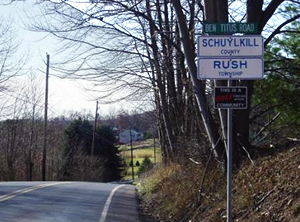It turns out that radon exposure may eventually be linked to more forms of cancer other than lung cancer – which has one of the highest mortality rates of the disease.
Radon Linked to PV, a Rare Form of Blood Cancer
 Pennsylvania homes in counties such as Carbon, Luzerne and Schuylkill have been found to exhibit elevated levels of radioactive toxins in the air and soil, such as radon gas. The information was unveiled in a report from the federal Agency for Toxic Substances and Disease Registry (ATSDR). The findings are a direct result of research which was sparked by a high rate of a rare form of blood cancer. An unusually high number of residents have been diagnosed with polycythemia vera (PV), which – as mentioned – is a very uncommon form of cancer. After conducting thorough research, ATSDR has radon linked to the linked problem.
Pennsylvania homes in counties such as Carbon, Luzerne and Schuylkill have been found to exhibit elevated levels of radioactive toxins in the air and soil, such as radon gas. The information was unveiled in a report from the federal Agency for Toxic Substances and Disease Registry (ATSDR). The findings are a direct result of research which was sparked by a high rate of a rare form of blood cancer. An unusually high number of residents have been diagnosed with polycythemia vera (PV), which – as mentioned – is a very uncommon form of cancer. After conducting thorough research, ATSDR has radon linked to the linked problem.
Polycythemia is a disorder that affects bone marrow, leading to an abnormal increase in the number of the patient’s blood cells. As a result too many red blood cells are produced in the body, and sometimes even the number of white blood cells and platelets may also increase.
Elevated Radium Levels in the Local Soil and Air Were Found
Lora Werner, director of ATSDR in the region is worried that the elevated levels may be a health concern for local residents.
“ATSDR considers the exposures to radon gas in indoor air at these homes to be of public health concern and encourages residents living in the study area to have their homes tested.”
Per the request of ATSDR, the PA state Department of Environmental Protection (DEP) collected soil and air samples from various homes in the affected area which layered three counties from Tamaqua, McAdoo and Hazleton. This was primarily due to the concentration of diagnosed cancer cases in the area.
Elevated radon levels were discovered in the soil and air samples, as well as private well water samples. If you weren’t already aware, radon can also seep into a home through the water supply just like it can through cracks in the foundation, walls and floors. Although, it is less likely to gather in abundance due to water transfer it is still certainly possible for elevated levels to amass from it.
Residents Should Test Their Home for the Presence of Radon
ATSDR recommends that all residents with homes in the air have their residence tested for the presence of radon. We recommend testing twice a year, once in the summer and another time in the winter. However, if there is the possibility of an elevated presence of the gas – such as the one outlined by ATSR – it is important that you have your home tested as soon as possible.
Start with short term tests, and conduct a long-term test if elevated levels are discovered after the others. Contrary to popular belief you can purchase DIY testing kits for relatively cheap at any hardware store and online. You can have licensed professionals conduct a test but it’s not necessary. Just follow the appropriate rules and guidelines for testing your home.
Via: Standard Speaker


